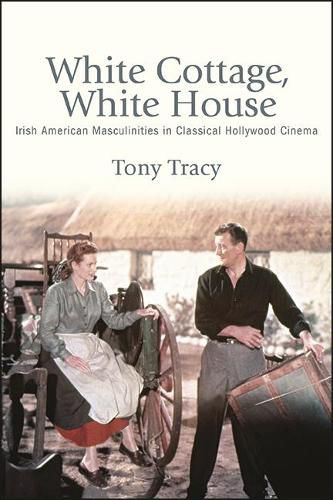Readings Newsletter
Become a Readings Member to make your shopping experience even easier.
Sign in or sign up for free!
You’re not far away from qualifying for FREE standard shipping within Australia
You’ve qualified for FREE standard shipping within Australia
The cart is loading…






This title is printed to order. This book may have been self-published. If so, we cannot guarantee the quality of the content. In the main most books will have gone through the editing process however some may not. We therefore suggest that you be aware of this before ordering this book. If in doubt check either the author or publisher’s details as we are unable to accept any returns unless they are faulty. Please contact us if you have any questions.
Argues that Irish American masculinity functioned to negotiate, consolidate, and reinforce hegemonic whiteness in Hollywood cinema from 1930 to 1960.
White Cottage, White House examines how Classical Hollywood cinema developed and deployed Irish American masculinities to negotiate, consolidate, and reinforce hegemonic whiteness in midcentury America. Largely confined to discriminatory stereotypes during the silent era, Irish American male characters emerge as a favored identity with the introduction of sound, positioned in a variety of roles as mediators between the marginal and mainstream. The book argues that such characters function to express hegemonic whiteness as ethnicity, a socio-racial framing that kept immigrant origins and normative American values in productive tension. It traces key Irish American male types-the gangster, the priest, the cop, the sports hero, and the returning immigrant-who navigated these tensions in maintenance of an ethnic whiteness that was nonetheless "at home" in America, transforming from James Cagney's "public enemy" to John Wayne's "quiet man" in the process. Whether as figures of Depression-era social disruption, avatars of presidential patriarchy and national manhood, or allegories of postwar white flight and the nuclear family, Irish American masculinities occupied a distinctive and unrivaled visibility and role in popular American film.
$9.00 standard shipping within Australia
FREE standard shipping within Australia for orders over $100.00
Express & International shipping calculated at checkout
This title is printed to order. This book may have been self-published. If so, we cannot guarantee the quality of the content. In the main most books will have gone through the editing process however some may not. We therefore suggest that you be aware of this before ordering this book. If in doubt check either the author or publisher’s details as we are unable to accept any returns unless they are faulty. Please contact us if you have any questions.
Argues that Irish American masculinity functioned to negotiate, consolidate, and reinforce hegemonic whiteness in Hollywood cinema from 1930 to 1960.
White Cottage, White House examines how Classical Hollywood cinema developed and deployed Irish American masculinities to negotiate, consolidate, and reinforce hegemonic whiteness in midcentury America. Largely confined to discriminatory stereotypes during the silent era, Irish American male characters emerge as a favored identity with the introduction of sound, positioned in a variety of roles as mediators between the marginal and mainstream. The book argues that such characters function to express hegemonic whiteness as ethnicity, a socio-racial framing that kept immigrant origins and normative American values in productive tension. It traces key Irish American male types-the gangster, the priest, the cop, the sports hero, and the returning immigrant-who navigated these tensions in maintenance of an ethnic whiteness that was nonetheless "at home" in America, transforming from James Cagney's "public enemy" to John Wayne's "quiet man" in the process. Whether as figures of Depression-era social disruption, avatars of presidential patriarchy and national manhood, or allegories of postwar white flight and the nuclear family, Irish American masculinities occupied a distinctive and unrivaled visibility and role in popular American film.